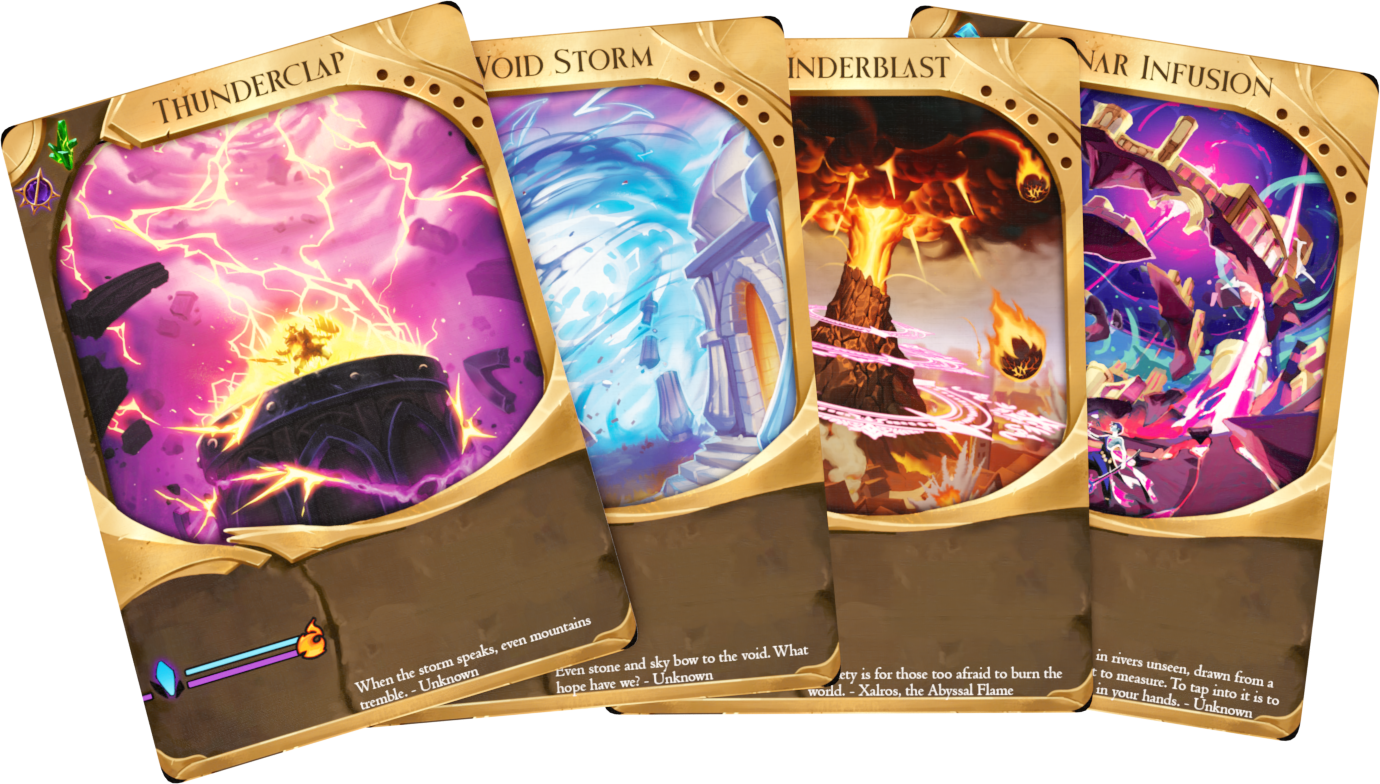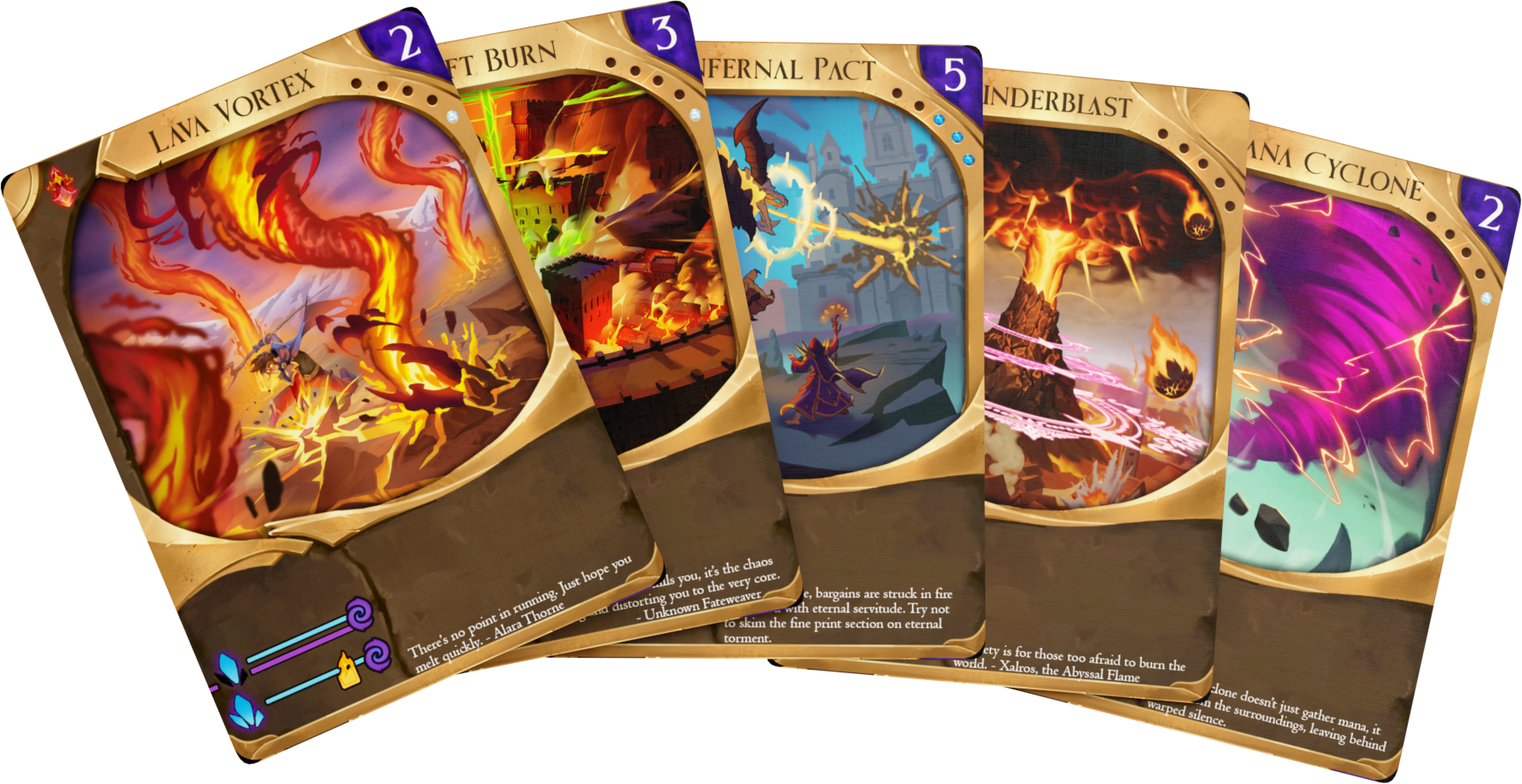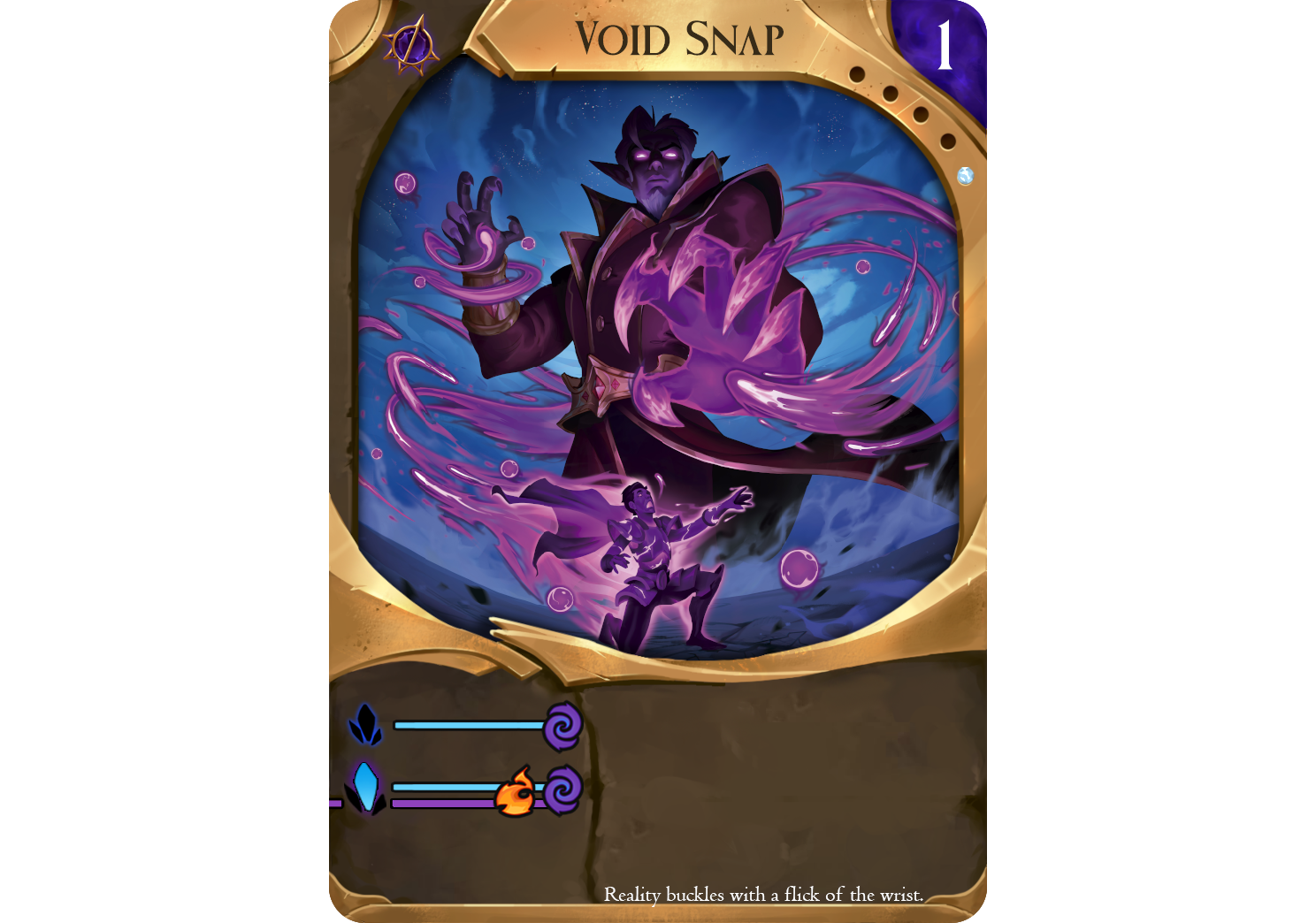Thinning with Purpose: Strategic Deck Sculpting in Riftblade
Deck thinning – removing weaker or less useful cards from your deck – is a cornerstone strategy in most deckbuilding games. If you're new to the genre, or even if you're experienced, understanding how thinning works specifically in Riftblade is crucial, as the trade-offs here are unique. Let's dive in.
What is Deck Thinning and Why Bother?
At its core, deck thinning means using a game mechanic to eliminate cards from your deck permanently. Why? To improve the average quality of your hand. By removing less impactful cards, you increase the odds of drawing the powerful spells you've strategically purchased from The Rift.
Think about a basic starter card like Thunderclap: it costs an Empowered Riftstone for just one damage. While useful early on, it's quickly outclassed by most spells available in The Rift. Removing Thunderclap makes it more likely you'll draw that game-changing spell you bought instead.
(Quick Reminder: In Riftblade, the primary way to thin your deck is by using a Wild Riftstone's secondary ability – consume the Wild die to Trigger the Basic/Empowered effects of a card from your hand, then Destroy that card, removing it from the game.)
The Riftblade Difference: The Crucial Role of Starter Cards
"But my starter cards all synergize!" Correct! And this is where Riftblade demands careful thought. Unlike some deckbuilders where aggressively ditching starters is always right, doing so too quickly in Riftblade can cripple your flexibility.
Why? The Void Aspect. Every starting card provides access to the Void Aspect. Crucially, Void is the only Aspect that connects to all other Aspects (Infernal, Celestial, Soul, Chaos). Thin too aggressively early on, and you risk breaking your ability to chain spells together and limit how you can adapt to your opponent’s strategy.
Example: If you Destroy both your Void Storms on turn one, you'll draw purchased cards faster, yes. But you'll also severely limit your ability to play or combo with any Soul spells you might acquire later. As your deck grows and your strategy solidifies, this might be fine. But early on, it significantly reduces your power to adapt to what The Rift offers. It’s also a definitive ‘tell’ you give your opponent, allowing them to more swiftly craft a counter-strategy.
Key Takeaway: Thinning starters like Thunderclap is generally good, but be cautious about removing too many Void-providing cards, especially before your core strategy is established. Maintain flexibility in the early-to-mid game.
Advanced Thinning: Triggering Non-Starter Spells
Should you ever use a valuable Wild Riftstone to Trigger and Destroy a non-starter spell you bought from The Rift? This is a complex decision, but vital for high-level play.
Remember the trade-offs:
You only get the card's Basic/Empowered effects, losing its Overcharged potential.
You permanently lose a potentially powerful card.
Short-term, it slightly increases the ratio of weaker starter cards remaining in your deck.
Despite these costs, Triggering purchased spells from your hand is sometimes the optimal play, particularly mid-to-late game. Here are two key scenarios:
Aspect-Shifting for Adaptation
Sometimes, your initial strategy gets countered, or The Rift offers compelling cards in different Aspects. Trying to pivot can leave your deck disjointed. Selectively Triggering/Destroying cards from your original Aspect can help you refocus and improve synergy.
Example Scenario: Imagine a game where you’ve built an Infernal-focused burn deck, but your opponent has countered with Chaos and is largely negating your discard strategy. In this situation, if things continue down this path, your opponent is likely to win through superior card flow and options.
From Left to Right: Lava Vortex, Rift Burn, Infernal Pact, Cinderblast, and Mana Cyclone
The Pivot: Playing pure Infernal magic against Chaos is a losing strategy, you need to adapt, perhaps by blending in Celestial or Void damage. But adding new cards without removing old ones risks inconsistency. A smart move? Use a Wild secondary on Lava Vortex next time it's drawn. Its Overcharged effect (burn) is being countered, making its full power less valuable. Triggering its basic damage and Destroying it helps streamline the deck towards a new focus. Rift Burn might also follow in short order if you are shifting away from a Chaos synergy.
Combating Late-Game Mana-Bloat
Void Snap can help with your early mana engine. Mid-to-late game, though, it can become a drag on your damage, and is worth considering as a Trigger for one of your Wild Rifstones.
Mana-generating cards are essential early and mid-game for buying powerful spells. But late-game, when purchasing slows or stops, drawing pure mana cards can be uninspiring. While you can always use mana to Trigger from The Rift, there's often a practical limit to how much mana you can efficiently spend per turn.
The Solution: Cards like Wraith Lash, Mana Cyclone, or Void Snap are excellent mana sources early on. Don't rush to remove them! But once your core deck is built and the game shifts to pure damage racing, consider using a Wild secondary on these cards when drawn. You get one last burst of their Empowered effect and remove a card that's no longer pulling its weight, increasing your chances of drawing pure damage spells on critical final turns.
The Final Tempering: A Nuanced Approach
Deck thinning in Riftblade isn't about blindly removing cards; it's about strategic sculpting that evolves throughout the game:
Early Game: Identify genuinely weak cards (like Thunderclap) for removal, but preserve Void Aspect starters to maintain flexibility and combo potential.
Mid-to-Late Game: Assess your strategy. Is it working? Being countered? Use the Wild secondary on non-starter cards strategically to:
Pivot: Remove cards from a failing strategy to focus on a new one (Aspect-shifting).
Streamline: Remove cards whose primary function is no longer needed (like excess mana generation) to increase offensive consistency.
Mastering when—and crucially, when not—to thin your deck, and which cards to target at different game stages, is key to unlocking Riftblade's strategic depth. Happy Dueling, Riftblades!



